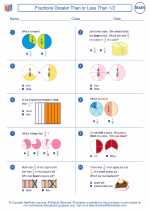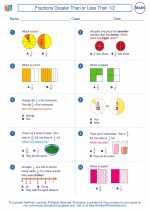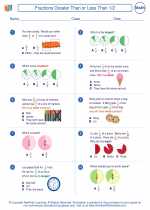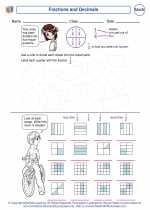Fractions Greater Than or Less Than 1/2 -> irrational numbers
Irrational Numbers
An irrational number is a real number that cannot be expressed as a simple fraction or ratio of two integers. This means that its decimal representation goes on forever without repeating. In other words, it is a non-terminating, non-repeating decimal.
For example, the number √2 (the square root of 2) is an irrational number. When expressed as a decimal, it continues indefinitely without settling into a repeating pattern: √2 ≈ 1.4142135623730950488016887242097...
Another well-known irrational number is π (pi), which represents the ratio of a circle's circumference to its diameter. Its decimal representation also goes on forever without repeating: π ≈ 3.1415926535897932384626433832795...
It's important to note that not all real numbers are irrational. In fact, most real numbers are rational, meaning they can be expressed as a fraction. However, the set of irrational numbers is still infinite and plays a crucial role in mathematics and geometry.
When working with irrational numbers, it's common to use approximations or symbols like √2 or π to represent them in calculations and formulas.
Understanding irrational numbers is essential for a comprehensive grasp of number theory and advanced mathematical concepts.
[Irrational Numbers] Related Worksheets and Study Guides:
.◂Math Worksheets and Study Guides Second Grade. Fractions Greater Than or Less Than 1/2

 Worksheet/Answer key
Worksheet/Answer key
 Worksheet/Answer key
Worksheet/Answer key
 Worksheet/Answer key
Worksheet/Answer key
 Worksheet/Answer key
Worksheet/Answer key
 Worksheet/Answer key
Worksheet/Answer key
 Vocabulary/Answer key
Vocabulary/Answer key
